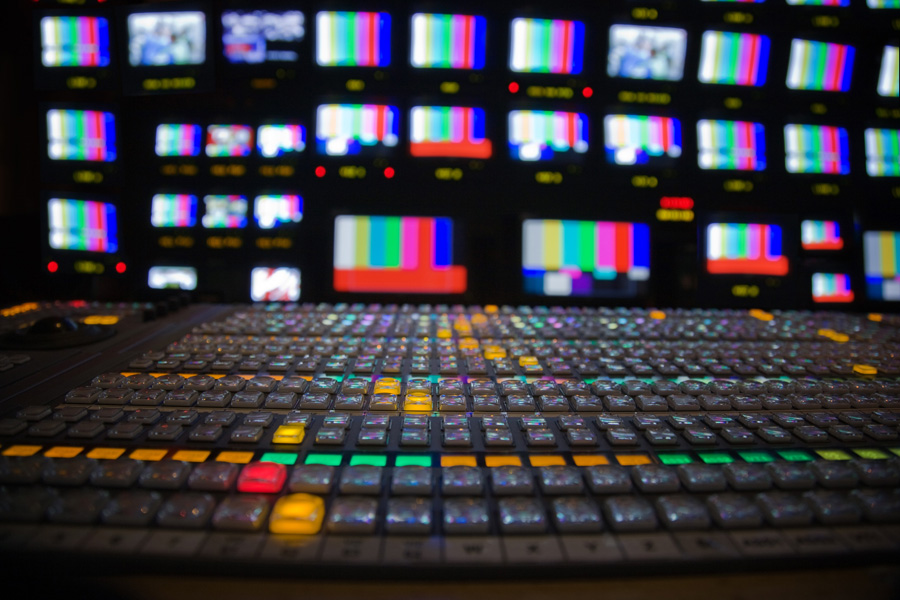Why audio visual charlotte nc is ideal for intimate settings
Wiki Article
Understanding the Incorporation of Audio Visual Innovation in Today's Educational Environments
The integration of audio-visual modern technology in instructional setups has actually transformed the training and discovering procedure. Educators now have accessibility to tools that deal with numerous discovering designs, improving pupil interaction and cooperation. The consolidation of these technologies offers both opportunities and obstacles. Understanding exactly how to properly execute these tools is essential. What techniques can instructors employ to make the most of the advantages of audio-visual modern technology in their class?The Evolution of Audio-Visual Innovation in Education
As academic demands advanced over the years, audio-visual modern technology underwent significant changes that improved the knowing atmosphere. Devices such as movie projectors and slide shows were the primary means of integrating visual aspects into class. These very early modern technologies provided educators with the ability to present information dynamically, yet they were limited in accessibility and interactivity.With the advent of video cassette recorders in the 1970s, classrooms began to integrate taped lessons, expanding the range of academic resources. The introduction of computers in the 1980s additional reinvented this landscape, enabling the development of multimedia presentations and interactive knowing experiences.
The increase of the web in the 1990s marked a critical moment, enabling real-time accessibility to a wide range of audio-visual products. Today, electronic devices such as interactive whiteboards and online learning systems remain to improve the instructional experience, promoting interaction and collaboration amongst students.
Benefits of Audio-Visual Tools for Diverse Knowing Styles
Audio-visual devices play an important role in dealing with varied discovering designs by boosting aesthetic discovering and improving auditory involvement. By integrating pictures, video clips, and noise, these innovations create an even more inclusive educational environment. This diverse method permits teachers to resolve the different preferences and requirements of pupils efficiently.Enhancing Visual Understanding
Engagement in the knowing process is noticeably improved via using audio-visual devices, accommodating different learning styles. These devices, such as videos, infographics, and interactive discussions, provide visual stimulations that help comprehension and retention. Visual students, particularly, take advantage of the unification of images and computer animations, which can streamline complex principles and enhance understanding. Furthermore, audio-visual resources can highlight real-world applications, making discovering more pertinent and engaging. By integrating shade, movement, and audio, educators can produce a vibrant learning atmosphere that records students' focus and cultivates deeper cognitive connections. Eventually, the critical use audio-visual modern technology not only supports aesthetic understanding but likewise improves the general instructional experience for diverse learners.Improving Auditory Interaction
A significant advantage of incorporating audio-visual tools in education and learning is their capacity to boost acoustic engagement among students. These devices, which encompass multimedia discussions, podcasts, and interactive audio aspects, accommodate numerous finding out styles, especially benefiting auditory learners (audio visual charlotte nc). By integrating sound and narration, instructors can develop immersive experiences that record pupils' focus and enhance understanding. This interaction is crucial, as it cultivates a much deeper understanding of the product and advertises retention. Furthermore, audio-visual tools can help with joint learning settings, urging trainees to take part in discussions and share their insights. Inevitably, the unification of audio-visual modern technology not only sustains acoustic involvement however likewise improves the general academic experience, making discovering more dynamic and effective for all pupilsEnhancing Interaction With Interactive Learning

Gamification components, such as quizzes and simulations, can improve motivation and retention, making learning a lot more delightful and efficient. These approaches not only stimulate cognitive engagement however additionally accommodate diverse knowing styles, ensuring that all pupils can get involved meaningfully. As a result, interactive learning settings foster a feeling of area and belonging, inevitably leading to improved scholastic outcomes. Via the integration of audio aesthetic innovation, teachers can change typical class right into dynamic areas where pupils grow and proactively form their instructional journeys.
Bridging Theory and Experiment Multimedia Resources
Multimedia resources serve as a crucial link in between academic ideas and functional application in instructional setups. By improving interaction, facilitating collaborative knowing experiences, and supporting diverse knowing styles, these tools develop a more inclusive and vibrant understanding setting - audio visual charlotte nc. This strategy not just cultivates deeper understanding however likewise prepares students for real-world challenges
Enhancing Involvement With Multimedia
Engagement in educational settings greatly increases when teachers integrate multimedia resources right into their mentor strategies. Using videos, podcasts, and interactive discussions improves the discovering experience, permitting trainees to get in touch with the material on go now multiple degrees. Multimedia resources accommodate numerous discovering designs, giving visual, acoustic, and kinesthetic stimuli that can hold pupils' interest better than conventional lecture methods. Furthermore, these resources can simplify intricate ideas, making them more easily accessible and memorable. By incorporating multimedia, educators can develop a dynamic classroom setting that fosters inquisitiveness and encourages learners. Inevitably, the calculated use of audio-visual technology offers to bridge the space between theoretical knowledge and sensible application, improving the educational experience for both trainers and pupils.Assisting In Collaborative Learning Experiences
Countless studies suggest that joint learning experiences markedly enhance trainee end results when integrated with multimedia resources. Multimedia tools promote communication among students, enabling them to participate in analytic and crucial believing jointly. By making use of video clip conferencing, joint platforms, and interactive presentations, instructors create environments for team effort and shared discovering. These modern technologies enable trainees to interact their concepts successfully and obtain prompt responses, cultivating a much deeper understanding of the subject issue. Additionally, multimedia sources can offer intricate principles in even more absorbable styles, advertising conversation and partnership. Therefore, the combination of collaborative learning and audio-visual technology not only enriches the educational experience but additionally prepares pupils for real-world team effort dynamics, emphasizing the value of teamwork and collective expertise building.Sustaining Diverse Discovering Styles
While standard mentor methods frequently accommodate a minimal variety of discovering preferences, the assimilation of audio-visual modern technology offers a much more inclusive method to education and learning. By using multimedia resources such as video clips, interactive simulations, and digital discussions, teachers can deal with numerous discovering styles, consisting of visual, acoustic, and kinesthetic. This flexibility permits differentiated guideline, allowing pupils to engage with content in means that resonate with their specific preferences. Furthermore, audio-visual devices can see assist in much deeper understanding by giving multiple depictions of complicated concepts. Consequently, trainees that may have problem with standard methods can locate different pathways to success, fostering a much more fair learning environment that sustains scholastic achievement for all learners.Obstacles in Implementing Audio-Visual Innovation
Audio-visual innovation holds terrific promise for improving instructional experiences, its execution frequently comes across substantial obstacles. One main issue is the financial burden connected with acquiring and keeping such equipment, which can stress budget plans, specifically in underfunded establishments. Additionally, inadequate training for educators can hinder efficient combination, leaving them ill-prepared to use the modern technology totally. Technical concerns, such as software program breakdowns and compatibility issues, may likewise disrupt lessons and irritate both instructors and trainees. Additionally, differing degrees of trainee accessibility to innovation outside the classroom can produce disparities in finding out possibilities. Finally, the potential for over-reliance on technology might interfere with necessary teaching methods, inevitably restricting the academic experience. Resolving these difficulties calls for a thorough approach, consisting of sufficient funding, professional development, and fair access to sources, to ensure that audio-visual technology can be leveraged properly in today's educational setups.Ideal Practices for Integrating Technology in the Class

Additionally, fostering an interactive environment via collaborative tools encourages trainee interaction and involvement. Using diverse audio-visual sources accommodates different finding out designs, suiting aesthetic, acoustic, and kinesthetic students. Consistently assessing the effect of innovation on trainee discovering assists teachers refine their methods and adapt to altering requirements. Lastly, including students in the selection of modern technology advertises possession and motivation. By adhering to these finest techniques, educators can develop a vibrant class atmosphere that successfully integrates innovation and improves the educational experience for all pupils.
The Future of Audio-Visual Modern Technology in Education And Learning
As classrooms increasingly embrace modern technology, the landscape of audio-visual devices in education remains to progress (audio visual charlotte nc). Future developments are anticipated to concentrate on greater interactivity and customization, enabling educators to customize learning experiences to specific student needs. Innovations such as enhanced reality (AR) and online reality (VIRTUAL REALITY) will likely offer immersive understanding environments, boosting trainee involvement and understanding
Additionally, expert system (AI) is poised to play a considerable duty in audio-visual modern technology by using real-time feedback and adaptive understanding pathways. This integration may aid teachers recognize and deal with trainee obstacles better. Cloud-based systems will help with easier access to sources and cooperation among students and instructors, despite area.
In addition to these technical breakthroughs, professional advancement for teachers will certainly be essential, guaranteeing they are equipped to use these devices effectively. In general, the future of audio-visual innovation in education guarantees to produce even more vibrant, inclusive, and impactful knowing experiences.
Often Asked Concerns
Exactly How Can Teachers Select the Right Audio-Visual Equipment for Their Classrooms?
Choosing ideal audio-visual tools needs educators to analyze their instructional objectives, take into consideration pupil demands, review available innovation, and seek suggestions from peers or specialists, making certain devices effectively improve discovering and engagement within their certain class setting.What Spending plan Factors to consider Are There for Applying Audio-Visual Modern Technology?
Budget plan considerations for implementing audio-visual technology consist of preliminary purchase costs, maintenance expenditures, training for personnel, and prospective software licensing costs. Furthermore, long-term investment in updates and replacements ought to also be factored right into monetary planning.Exist Particular Training Resources for Educators on Audio-Visual Equipment?
Numerous organizations offer training sources for teachers on audio-visual devices, including on-line programs, workshops, and instructional overviews. These resources intend to improve instructors' skills and self-confidence in successfully integrating innovation right into their mentor practices.Exactly how Do We Measure the Efficiency of Audio-Visual Technology in Discovering?
Measuring the efficiency of audio-visual technology in finding out includes assessing pupil involvement, comprehension, retention prices, and general academic efficiency. Studies, assessments, and empirical studies can offer beneficial insights into its influence on instructional outcomes.What Prevail Mistaken Beliefs Concerning Audio-Visual Technology in Education And Learning?
Usual mistaken beliefs about audio-visual innovation in education and learning consist of the idea that it guarantees interaction and discovering end results, as well as the assumption that all trainees benefit similarly, forgeting individual knowing preferences and demands.Report this wiki page